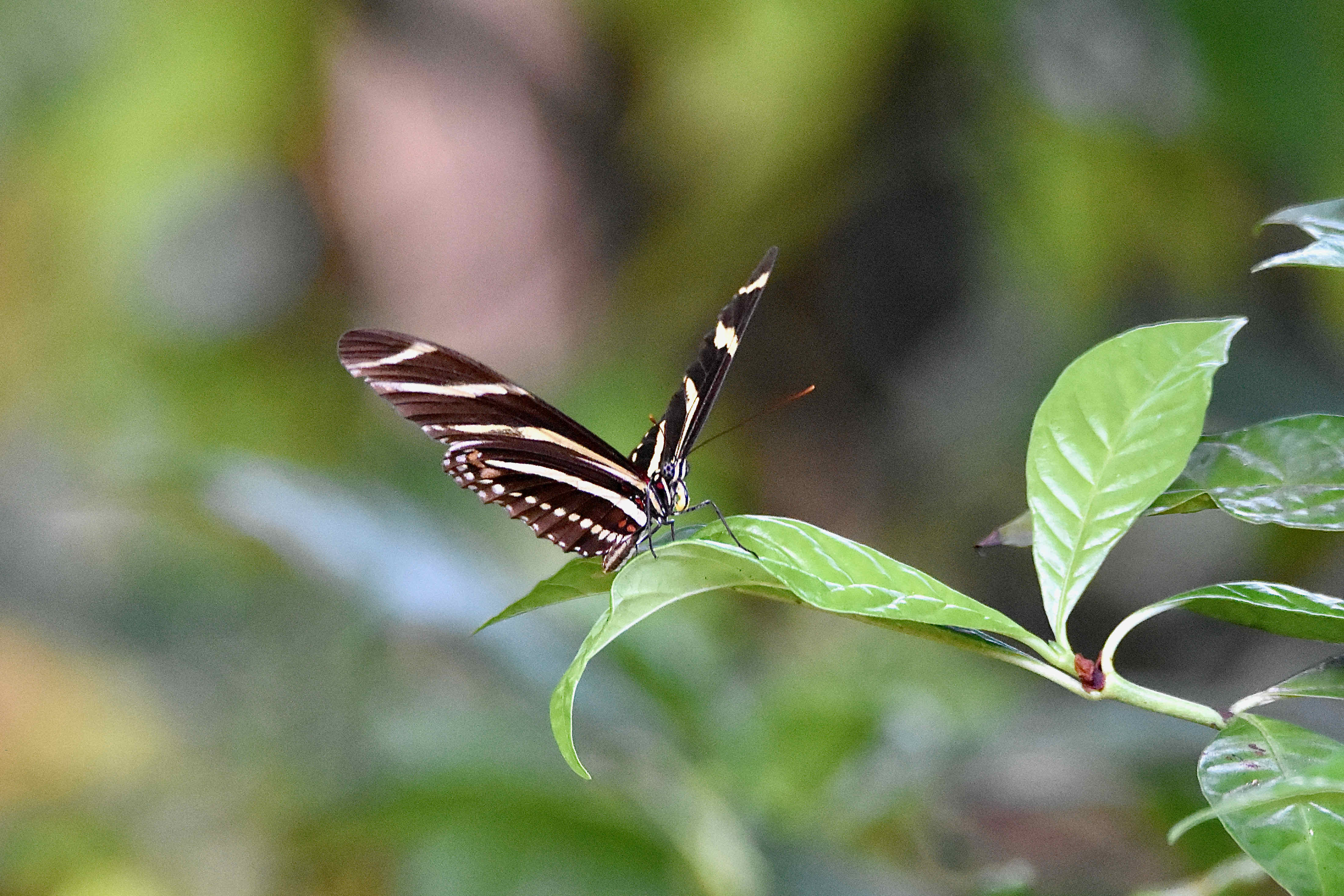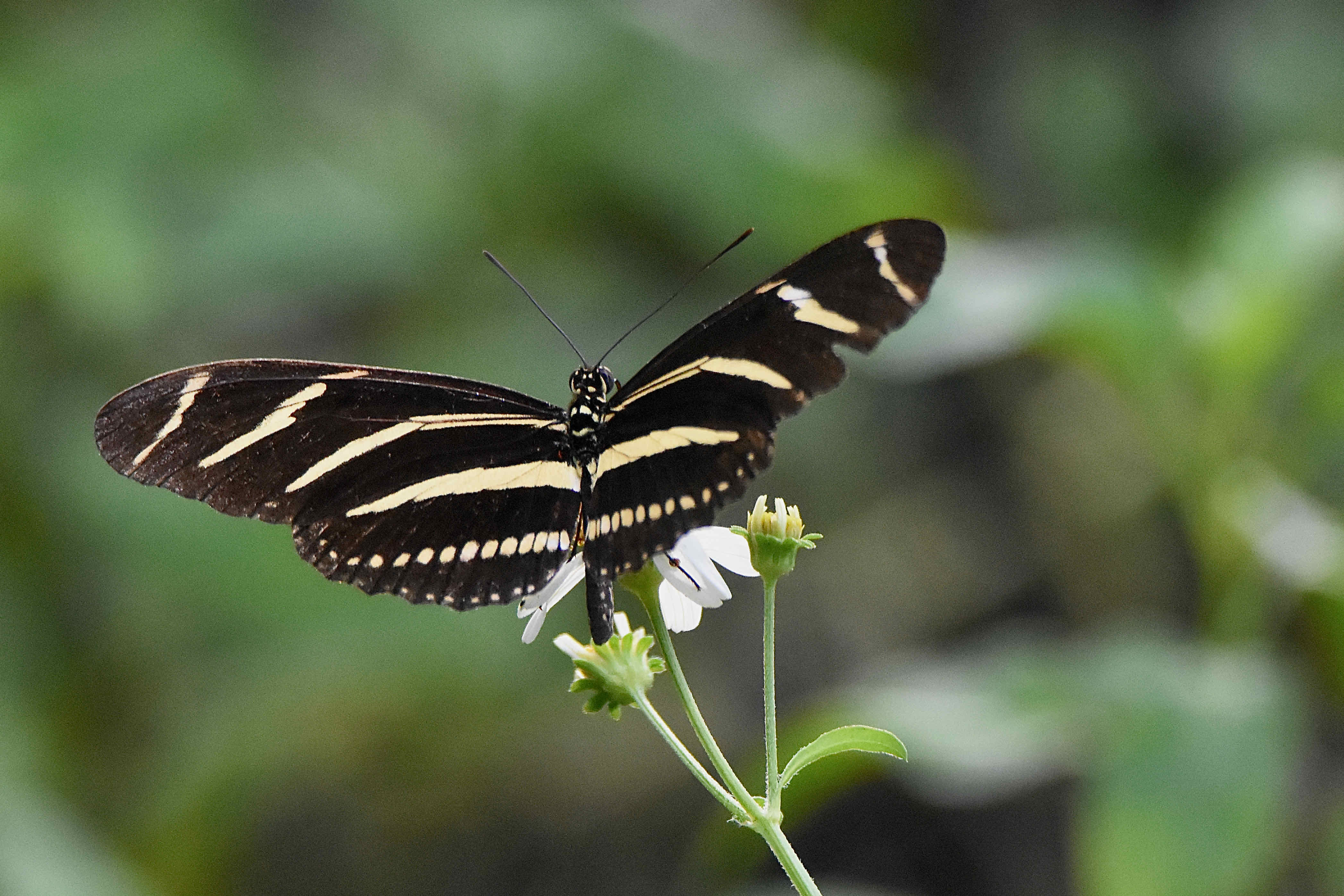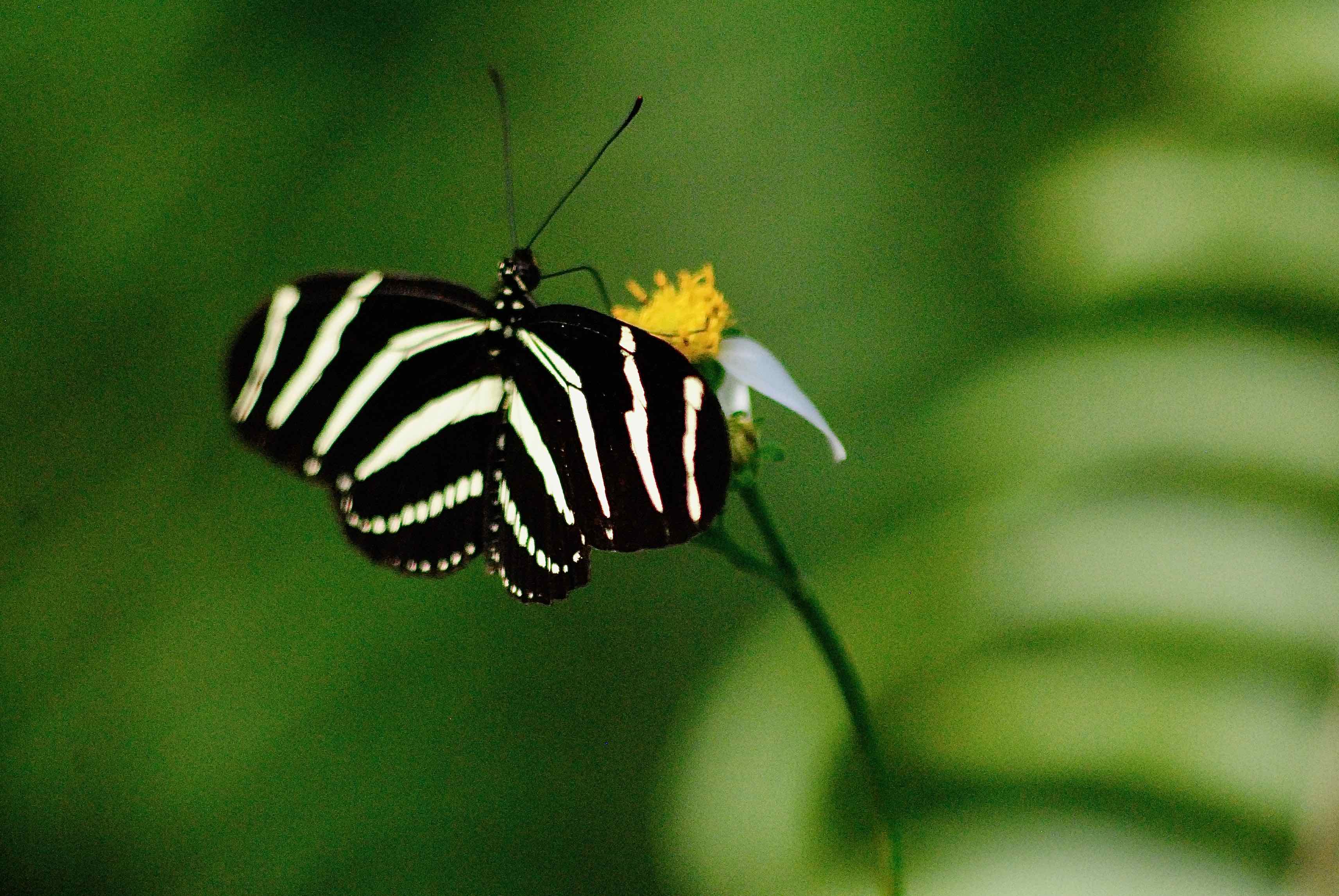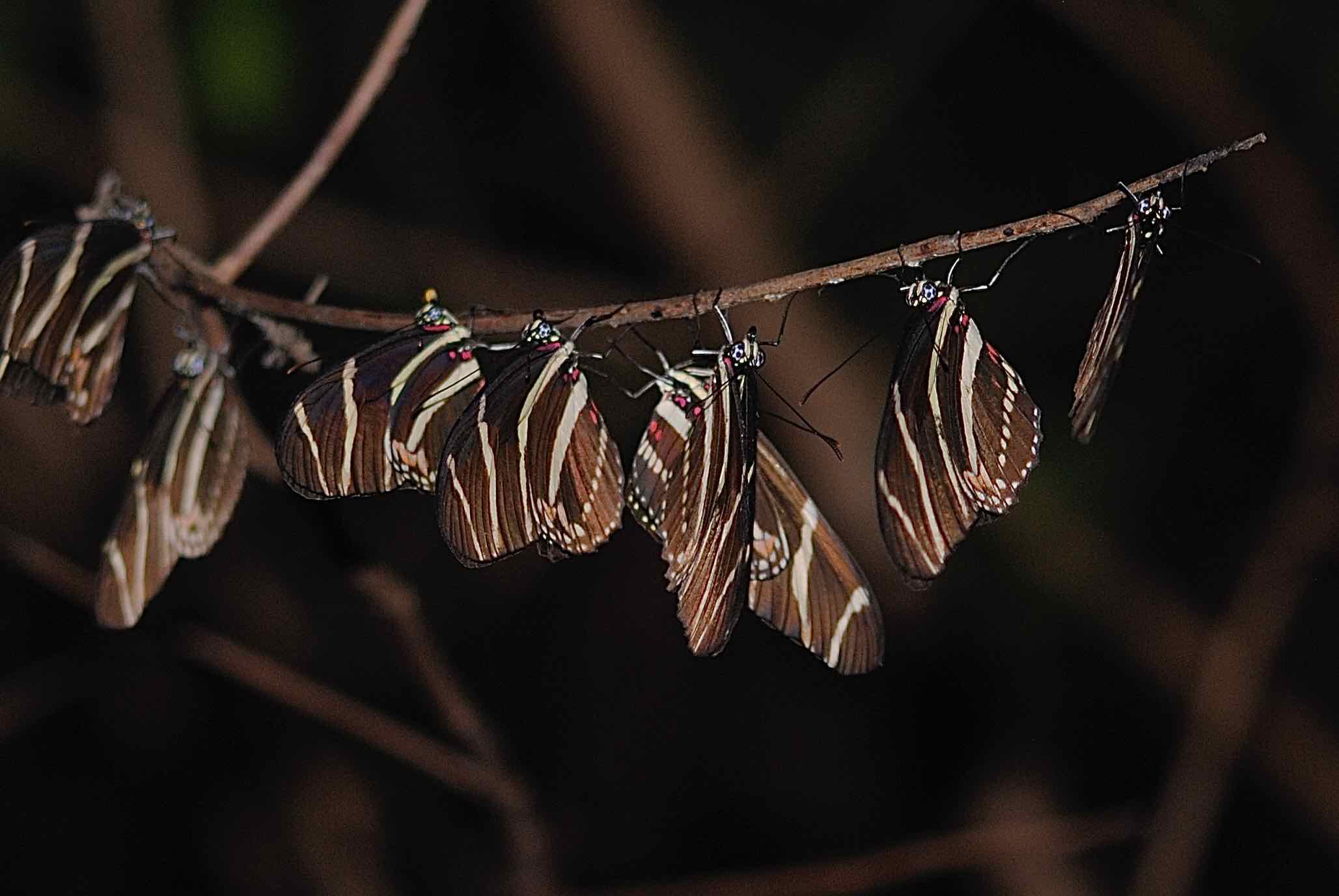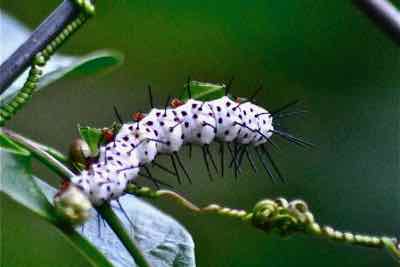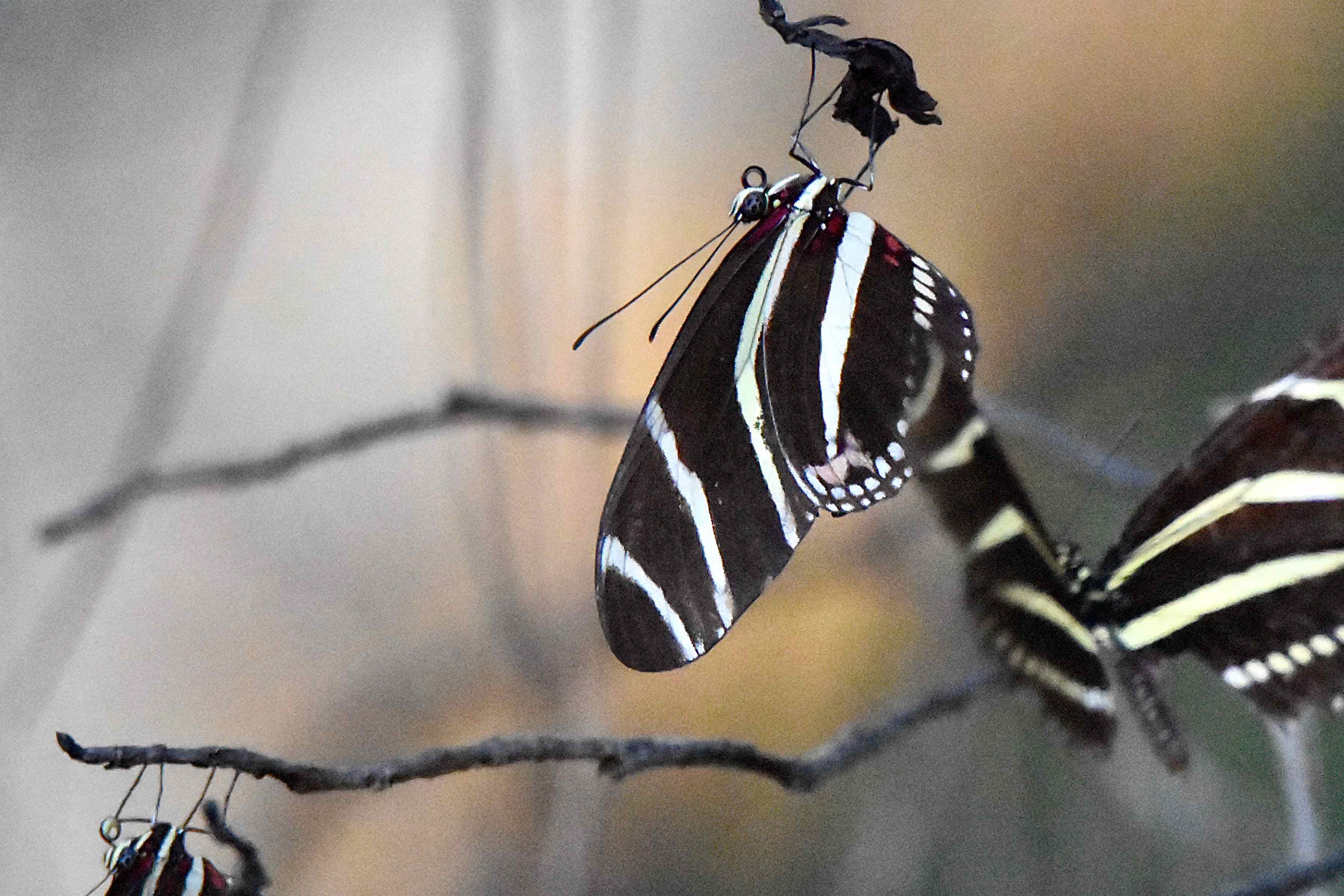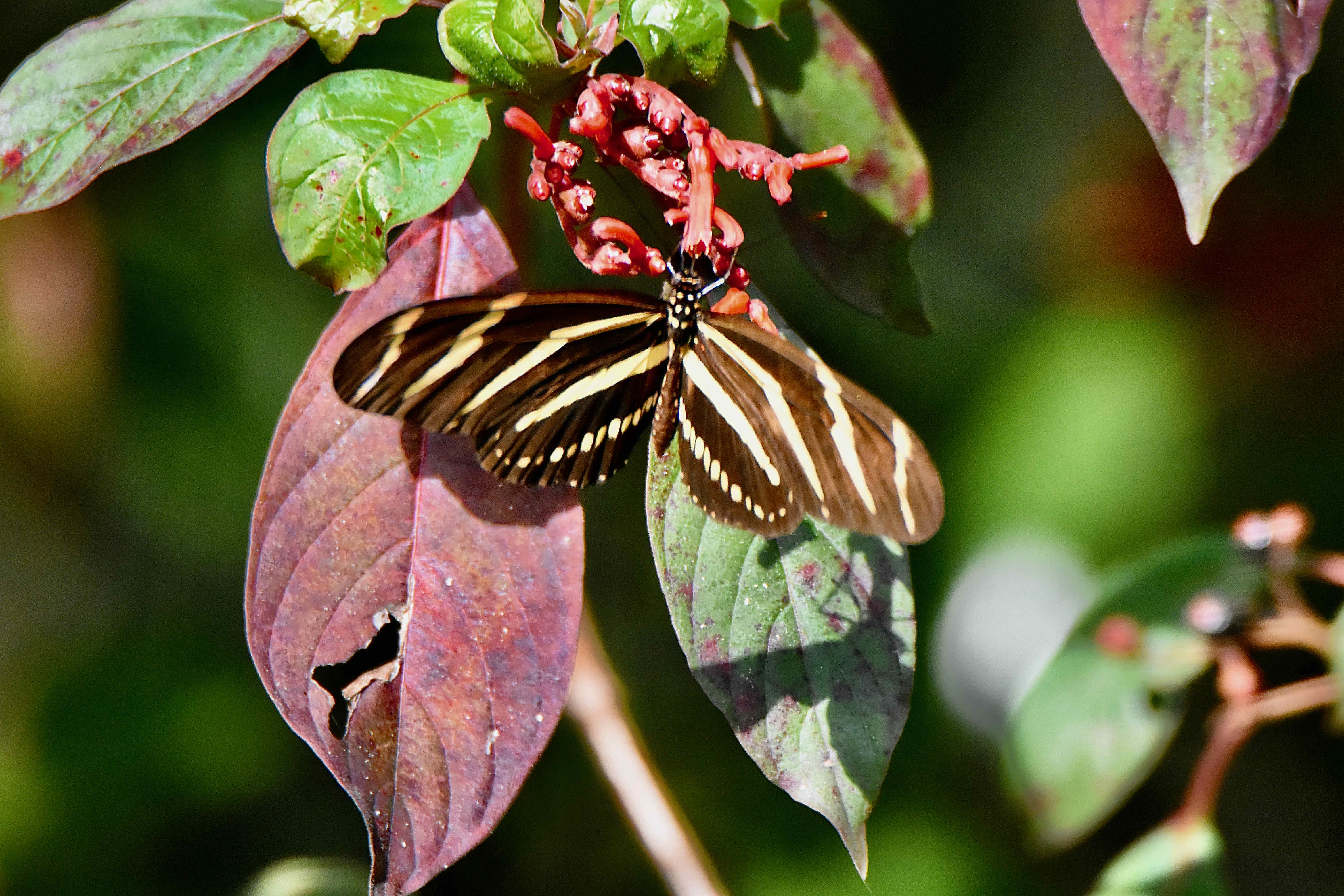
Zebra longwing butterfly, photographed at Daggerwing Nature Center, Burt Aaronson South Regional Park, Boca Raton, Palm Beach County, in July 2018.
Say hello to Florida's state butterfly, the zebra longwing, Helconius charitonia, so designated by the Legislature in 1996. It was a pretty solid pick by our solons for any number of reasons.
For one, zebra longwings live much longer than butterflies typically do. That's in large measure due to a diet that's different than most butterlies. They also have a social order, another rarity among butterflies. And they're also fairly intelligent — for an insect.
But the first thing most notice is its striking looks. It's mostly black, with long yellow bands that run through the wings. The rear wings have two lines of yellow dots, one row large dots, the second, along the outer edge of the wing, small. The undersides have some red in it (see the photo at the bottom left). The wings themselves are much longer than most butterflies. Put this together as a package, and the zebra longwing is unmistakeable. There really isn't another butterfly like it, at least not in Florida.
Zebra longwings can be found throughout the state, although they're more common the farther south you go. They like to hang out on the edges of forests, scrubs, hammocks and adjacent open spaces. They're active year-round.
In one sense, they're not picky eaters, but in another sense they are. They'll nectar from a wide variety of flowers, but their favorites are lantana camara and Spanish needles. Zebra longwings will eat the pollen of these two plants, not just sip their nectar. Zebra longwing saliva dissolves the pollen and allows the animal to absorb the nutrients that the pollen contains. Nectar has plenty of sugars but zero protein; pollen, on the other hand is rich in protein and sugars.
And it's that protein intake that allows the zebra longwing to live a much longer life than most of their kind. The lifespan of the average butterfly is measured in weeks; the zebra's in months. It's such an important part of their diet that some theorize that plants and butterfly coevolved so that the plants developed a pollen to the tastes of the zebra, ensuring that zebra would remain faithful pollinators.
Zebra longwings will return day after day to feed on the same plants, following the same path as the day before, a process called trap lining. Not just the same species; the same individual plants. If a plant happens to be missing, they'll circle around the site as if looking for it. At night, zebras will gather in roosts (see the photo at the bottom left), the oldest among them choosing the site. Come morning, they nudge each other to begin the new day.
Zebras are on the medium side, with a wingspan between 2.75 and four inches. Males spend their day patrolling for females — and female chrysalids — the stage before full adulthood. They'll wait for the female to emerge, fertilize her and leave a chemical that will discourage other males from mating with her. Females will lay single or small clusters of eggs on new growth of various passion vines, including native corkystem and purple.
Zebra longwings are mainly critters of warm climes, their range extending southward through Mexico, Central America and parts of the Caribbean. They'll wander north into South Carolina and the central part of the United States in the warmer months, but they do not tolerate cold. They are members of Nymphalidae, the brushfoot family.

